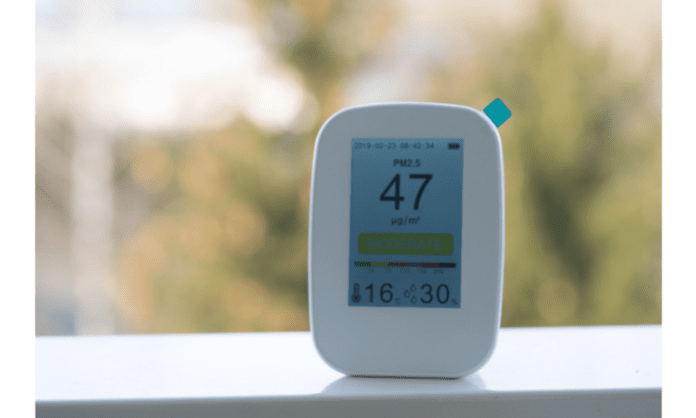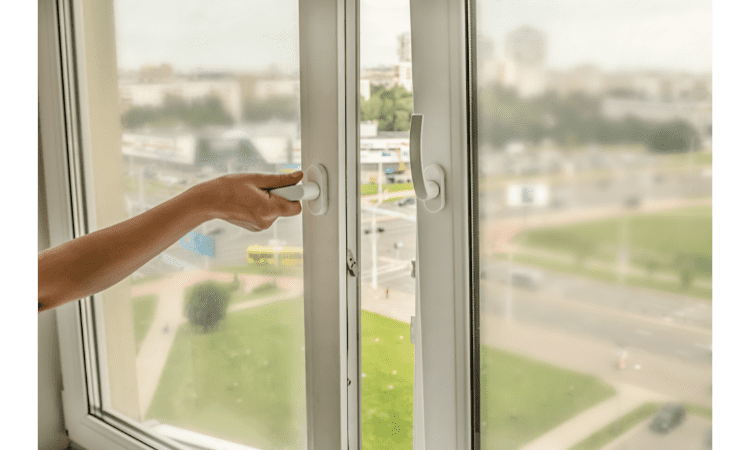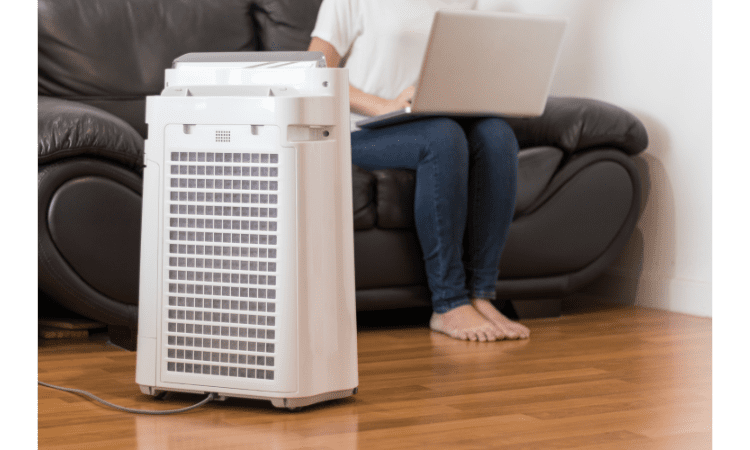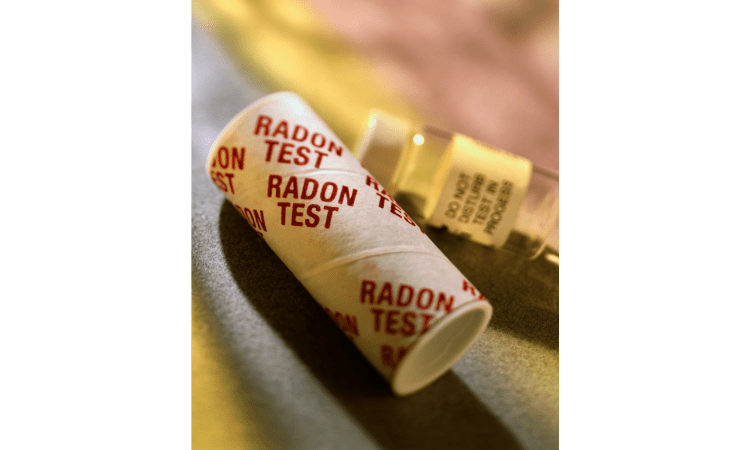
The air inside your home can be more polluted than the air outside. This is because indoor air pollution comes from sources that are within the home itself, such as cooking or cleaning products, but also from sources outside the home, such as second-hand cigarette smoke and pollen. There are many processes to improvize the home’s air quality. Some of these include installing better ventilation systems, using natural cleaners instead of chemical ones and getting rid of dust mites by using a dehumidifier, and setting up an air filter system. Let’s know the 12 best ways to improve home air quality in detail.
What is the poor air quality in home
Poor air condition in the house can cause health problems, eye problems and allergic reactions. Poor air condition is when there are too many chemicals or other irritants in the air you breathe. These irritants may come from cleaning products, VOCs (volatile organic compounds) like formaldehyde or paint thinners; unhealthy indoor plants; mold spores; cigarette smoke; pets’ dander or hair that gets stirred up and re-circulated into the air when they move around the house or shake their fur outside.
It’s important to know what causes poor air standards because then you can take steps to better the home’s air conditions.
Clean floor regularly

Cleaning room floors is an easy process to remove dust, dirt, and other allergens from the house. Most vacuums are excellent at picking up larger particles that can irritate allergies. If you’re looking for a more thorough clean and want to get deep into the carpet fibers, consider using a steam mop instead of a traditional vacuum.
For hardwood floors or other flat surfaces, there are several tools available to help you scrub down room floor. You can use a damp cloth or sponge with some soap or cleaner in it on smaller areas of the floor; however, if you have larger sections of hardwood that need attention then we recommend using either a broom or a dustpan filled with water mixed with vinegar as this should do most of the work for you.
Also Read :- 7 Unhealthy Items our House Should Never Contain
Check AC filter

You should change the AC filter every three months or so. You can tell if AC filter needs replacing by looking at it and feeling it. If there’s dust and dirt on it, the best thing to do is remove that first with a vacuum cleaner before cleaning out inside of the AC unit itself. Afterward, if you’re still worried that something might have gotten stuck inside of the unit (like leaves or insects), use a hose attachment connected to an outdoor faucet with cold water until all traces are gone.
Proper ventilation

- Open windows. You’ve probably heard that opening up windows is a great technique to better air quality in the home, and it’s true. Ventilation from windows can help keep fresh air flowing through the house and out any stale or polluted air that’s been sitting around for too long. Just make sure you don’t leave them open when it’s freezing outside.
- Use exhaust fans. These are techniques to get rid of any cooking smells or odors that may be lingering in the kitchen after dinner (especially if you like cooking with garlic). They’ll also help with humidity levels by pulling moisture out of the air and making it easier for everything else to dry off quickly after getting wet; this keeps mold spores from growing inside damp spots like bathrooms and kitchens where they’re likely to flourish under humid conditions over time—not ideal when these areas are meant as food preparation surfaces.
- Use a dehumidifier/humidifier depending on need: We all know about the importance of freshwater for our bodies but did you know the importance of good standard of flow rates at home? Specifically when it comes down to having high humidity levels indoors then there’s a no better option than purchasing one of these machines which will regulate humidity levels based on their own settings so go ahead!
Use an air purifier

An air purifier is a device that removes particles from the air. Air purifiers can be used to clean the air in the home, removing dust, pollen, mold, pet dander and other airborne particles.
If you have pets or allergies in the house, an air purifier can help keep those allergens at bay. Additionally, if you smoke cigarettes or consume marijuana (or any other substance that produces smoke), an air purifier will help reduce the amount of harmful chemicals entering through your lungs.
Reduce damp

Dampness in the home is a serious problem that can cause mold, which can lead to respiratory problems, allergies and infections. In fact, it’s the leading cause of asthma in children.
To prevent dampness in the home:
- Properly ventilate bathrooms or laundry rooms. Use exhaust fans with non-electric motors so they don’t create excess humidity while they’re running.
- Run dehumidifiers when necessary (especially during particularly wet seasons). These appliances remove water from the air by condensing it into droplets that are collected in their reservoirs or tanks before being drained away into an outside drain pipe system or through a hose connected directly to an outdoor spigot outside where it will dissipate harmlessly outdoors instead of spreading throughout the home causing mold growth inside walls where you’ll never know there was ever anything wrong until someone breaks down those walls years later—we’ve all been there.
Use cooking vent

If you have a kitchen with a fan, make sure it’s not being used as an exhaust or extractor vent. If your kitchen has a small window and no other system to properly ventilate the room, then it’s okay to use it as an exhaust fan while cooking (just make sure the window is open). However, if there are other systems in which you can ventilate the room—such as another window or ceiling vents—then don’t use this method at all.
If any kitchen has two doors: one that opens into another room and another that leads directly outside (without doors opening between rooms), don’t close off access from inside by using only one door. This could lead to problems like mold growth if humidity levels in those spaces become too high without proper ventilation.
Don’t use fans meant for bathrooms as part of general air circulation system because they won’t help move stale air out of other rooms where people spend most of their time; instead they’ll just move fresh air around without actually circulating anything.
Test for radon levels

Radon is a radioactive gas that can be found in all 50 states. It’s colorless, odorless, and tasteless. In fact, radon is so difficult to detect that you may live in an area with high levels of this harmful gas and not realize it. There’s no need to panic—there are many processes that you can test for radon levels at home and take steps to reduce them if necessary.
Radon is the second leading cause of lung cancer deaths from natural sources in the United States (the first being smoking). Reducing your exposure to this deadly substance is essential for maintaining proper health long into your future.
Place indoor plants at proper places

One of the best processes to get better indoor air condition is by planting indoor plants. Plants help purify the air, absorbing carbon dioxide and releasing oxygen over time. They can also help absorb formaldehyde and benzene, two common indoor pollutants that can cause health problems when breathed in over a long period of time.
Other types of plants can help reduce mold growth in the home by competing for nutrients with molds and fungi. Dust mites are another common source of allergens in houses, but some plant species actually attract these pests away from humans so they don’t end up breathing them in or touching them! Lastly, many people have pets (cats or dogs) that shed dander constantly—this is typically one type of animal allergen that’s hard to avoid because it’s airborne throughout the house no matter what you do.
Control humidity

Humidity is a measure of the amount of water vapor in the air. The higher the humidity, the more likely mold and mildew are to grow. You can control humidity by using a dehumidifier or air conditioner in the home.
This will keep mold from growing in the home and causing health problems for everyone living there. Humidity can also be controlled by opening windows and turning on fans; this will allow hot air to leave while cool air comes into the house through windows that are opened during warm weather months when it’s not raining outside (or snowing).
Dusting is must

Dusting the house is a chore that many of us would rather avoid. However, it’s an important part of maintaining the home and keeping allergens at bay. Dust mites are microscopic bugs found in dust and can trigger allergies, asthma, eczema and other respiratory problems when they get into the air you breathe.
Dust mites like to make their houses in dark places where they won’t be disturbed (think: beds). By regularly dusting bedding (especially between sheets), you can protect yourself from these tiny critters that could otherwise wreak havoc on your health.
Don’t smoke indoors

If you smoke, it’s better to do it outside. Smoking is one of the most common causes of indoor air pollution. Tobacco smoke contains more than 4,000 chemicals and compounds including nicotine, tar and carbon monoxide—which are all harmful to your health. Not only does smoking cause respiratory problems such as coughing or wheezing; it can also damage furniture and clothing by leaving a yellowish stain behind on fabric surfaces like carpets and upholstery.
In addition to smoking inside the house, some people may be tempted to light up while they’re cooking in their kitchen since they’re already there anyway—but this is also bad news for air condition! The same goes for people who use scented candles: these emit dangerous particulates into the air that can irritate your lungs if inhaled regularly over an extended period of time.
Control over allergens
To control allergens, you can take a number of actions. The most important thing is to keep pets out of the bedroom, or at least ensure that their bedding is washed regularly.
The next step is to keep the bedroom clean and dry. Dust mites, mold spores and pet dander are ubiquitous in our environment—but they are also sensitive to air moisture levels. Keep the humidity level in the home below 50% if possible (ideally under 30%). And make sure to use an air purifier if necessary—you may find one helpful even if you don’t have any allergies!
Finally: avoid using scented products in the bedroom (especially those with strong scents like perfume) as these can irritate the respiratory tract even more than just having dust around would do on its own.
Takeaway
We hope this article helped you learn a little more about improving the home’s air quality, and that it encouraged you to take action. The positive news is that there are many things you can do to improve your indoor air quality, from regular cleaning of surfaces to using an air purifier. It’s important to remember that poor air quality isn’t always noticeable—especially if you’re sensitive—but it can have serious consequences for anyone who spends time indoors without taking steps to protect themselves from polluted air.
Also Read: – Humidity and Allergies











